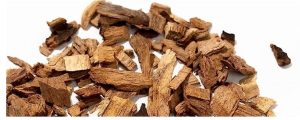Can You Put a Beaker on a Hot Plate: Facts and Precautions
Actually, yes, you can put a glass beaker on a hot plate. But, it’s essential to ensure that the beaker is designed for heating purposes and to be cautious of the associated risks.
A beaker, especially one made of glass, needs to be of high quality and specifically designed for laboratory use to be placed on a hot plate. The type of glass matters too.
For instance, Pyrex beakers are known for their thermal resistance and are often preferred in labs because they can handle significant temperature changes without breaking. But not all glass beakers have this feature.
The main risk comes from sudden temperature fluctuations. If a cold glass beaker is placed on a very hot plate, it might crack or even shatter. Therefore, it’s advised to gradually increase the temperature to prevent such mishaps.
Also, remember that while most glass beakers are designed for heating, not all of them are intended for direct contact with a heat source.
Always refer to the manufacturer’s guidelines before using a beaker on a hot plate to ensure safety and prevent accidents.
Hot Plate Mechanics and Material Reactions
Hot plates are essentially portable burners used for heating purposes in places where an open flame might be inappropriate or unavailable. Powered by electricity, these plates use either a coil or a ceramic surface to transfer heat.
The efficiency of heat transfer and the maximum temperature achieved can vary based on the plate’s design and materials. As materials come into contact with a hot plate, their properties play a crucial role in determining how they react.
For instance, metals with high thermal conductivity heat up quickly, while plastics may warp or melt. Hence, knowing the material’s thermal properties can prevent mishaps and ensure effective heating.
Learn More: To Leave or Not to Leave: The Hot Plate Overnight Conundrum
Glass Beakers on Hot Plates: Safe or Not?
Yes, a glass beaker can be placed on a hot plate. It’s crucial, though, to ensure that the beaker is specifically designed for heating. Some beakers, like those made of Pyrex, are renowned for their ability to handle significant temperature changes without damage.
Despite this, caution is essential. A rapid change in temperature could cause a beaker to crack or shatter. Always increase the temperature gradually and refer to manufacturer guidelines before heating.

Hot Plate Safe Materials
Not all materials are suitable for direct exposure to a hot plate’s surface. Metals, particularly those with high thermal conductivity, such as copper and aluminum, are commonly used as they can dissipate heat quickly.
Ceramics, on the other hand, retain heat longer but won’t warp. It’s vital to ensure that any container or utensil used on a hot plate can tolerate the heat and won’t release harmful substances as it warms.
The Risks of Inappropriate Containers on Hot Plates
Using the wrong container on a hot plate can lead to several problems. Containers not designed for high temperatures may melt, warp, or even explode.
Beyond the immediate risk of physical harm, there’s also a danger of releasing toxic fumes if the container material starts to break down. This not only contaminates the environment but poses serious health hazards.
It’s crucial to always check if a container is heat-safe before placing it on a hot plate. Safety first!
Safe Heating of Beakers: Best Practices
1. Start by ensuring the beaker is clean and dry; moisture can cause uneven heating or cracking.
2. Gradually increase the temperature. Rapid spikes can damage the beaker or its contents.
3. Regularly monitor the heating process. If the contents begin to boil or bubble vigorously, adjust the temperature.
4. Always handle heated beakers with thermal gloves to prevent burns. Remember, patience and constant vigilance are key to safely heating beakers.
Hot Plate Friendly Beaker Types
Various beakers have been designed keeping their interaction with hot plates in mind.
1. Pyrex beakers are popular because of their high thermal resistance.
2. Borosilicate glass beakers can withstand significant temperature changes.
3. Metal beakers, often made of stainless steel or aluminum, are durable and heat up quickly.
It’s essential to select the appropriate beaker based on your heating needs and the nature of the substance inside.
Beaker Precautions on Hot Plates
Safety should always be the top priority. Ensure the beaker is designed for heating. Avoid filling the beaker to its brim to prevent spills or boil over.
Place the beaker at the center of the hot plate for even heat distribution. Stay nearby during the heating process to monitor and intervene if necessary.
Mistakes to Avoid with Beakers on Hot Plates
1. Never place a cold beaker on a very hot plate; this may cause it to crack.
2. Avoid using beakers with visible cracks or damage.
3. Neglecting to monitor the heating process can lead to accidents.
4. Using the wrong type of beaker, not designed for heating, can be dangerous. Being aware of these pitfalls ensures a safer heating experience.
Even Heating: Beaker Tips
For optimal results, the contents of a beaker should be heated evenly.
1. Stir the contents regularly. This promotes uniform heating and prevents hotspots.
2. Use a heat diffuser or sand bath if available. It provides a barrier that spreads the heat.
3. Position the beaker centrally on the hot plate.
4. Check the hot plate’s surface for any unevenness or debris that might disrupt contact. Proper setup and regular monitoring can ensure consistent and effective heating.





